alexsl/E+ via Getty Images
In a recent backtest of adding a dedicated allocation to volatility (VIX) via a specialty ETF for enhancing risk management in a traditional 60/40 stock/bond strategy, the results were encouraging, or at least intriguing. Given a new round of extreme shifts in financial markets this year, an update seems in order.
Unsurprisingly, the roller coaster of recent market history shows superior results for managing risk by shifting a small portion of the bond allocation to a volatility ETF. The basic logic: continually holding a US-equity volatility ETF, which will usually rise sharply when the US stocks correct in more than a trivial degree, provides ballast for the overall portfolio. The permanent aspect of the vol allocation solves the problem of the near-impossibility of correctly forecasting when risk hedging will be needed. The solution isn’t cost-free, but in recent history, at least, it has been effective.
The conventional approach is to simply hold bonds – 40% of the portfolio in our simple backtest. But with interest rates rising, which challenges the traditional risk-management role of bonds, the idea of adding a VIX ETF to the mix is an intriguing idea. Indeed, to the extent that a VIX ETF offsets equity market loss, the risk management is unrelated to changes in interest rates, thereby diversifying the bond market’s hedging qualities.
Yes, using VIX ETFs is controversial, and it comes with its own specific set of risks and so moving down this path should not be taken lightly. One of the biggest issues with making a dedicated vol allocation: a relatively calm stock market for an extended period will translate into a costly hedge. The counterpoint is that the stock market is headed for a long run of higher volatility and deeper, more frequent drawdowns – the ideal environment for adding a dedicated VIX allocation.
In any case, there’s no harm in looking and so let’s update the earlier test. For details on the ETFs and related particulars and caveats, see my original article here. Meanwhile, here’s how three flavors of adding a VIX ETF to the standard 60/40 portfolio stack up from 2011 through yesterday’s close (Mar. 29, 2022).
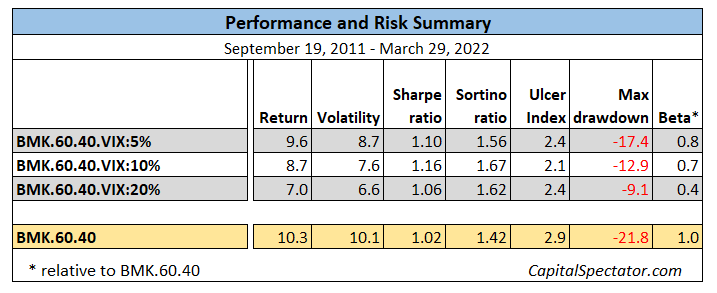
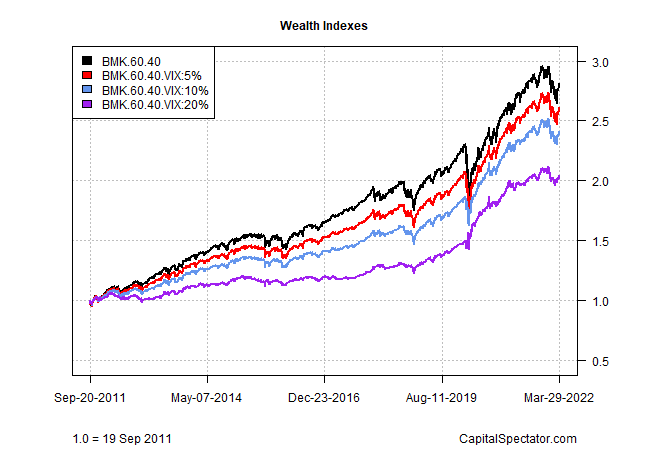
The main takeaway, the straight buy-and-hold mix of the 60/40 portfolio continues to outperform, albeit with higher risk.
For comparison, let’s move up the start date to Dec. 31, 2019, which marks the beginning of what might be considered the new world order for markets, courtesy of the pandemic and Russia’s invasion of Ukraine. Using this start date shows that a dedicated VIX allocation has reaped solid rewards in the form of higher performance and lower risk.
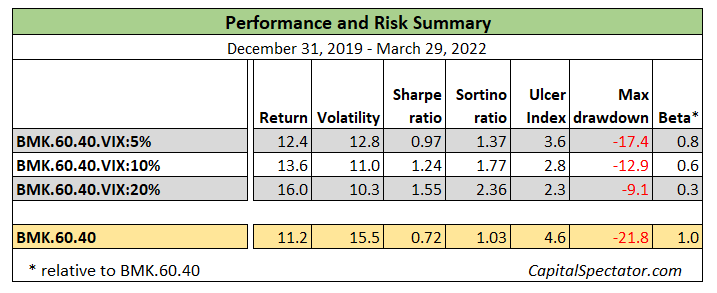
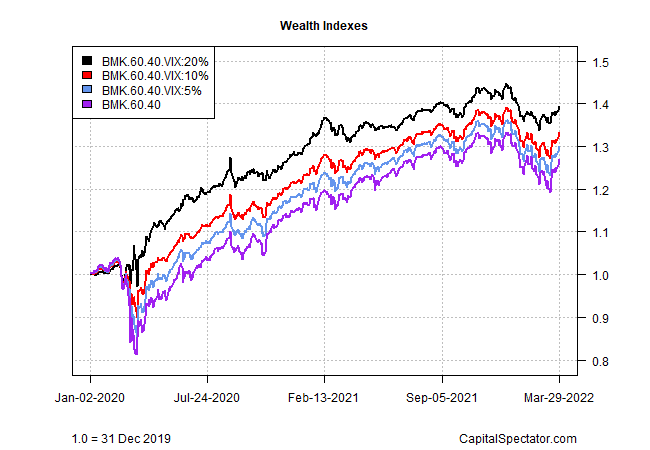
A similar result applies to the year-to-date results.
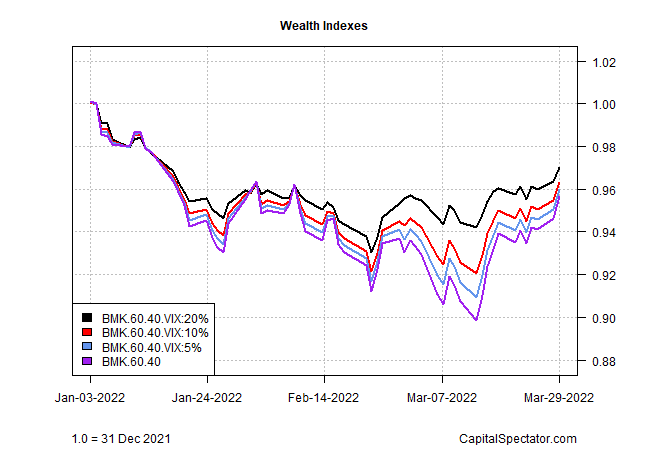
None of this is necessarily a reason to run out and add a dedicated VIX ETF to your asset allocation, although you could do a lot worse in the pursuit of risk management.
For those uncomfortable with the idea of forever holding a VIX ETF, which in isolation tends to be a losing proposition over the long haul, there are intriguing strategy allocation – adding a timing aspect to holding one of these funds, for example. In a future update, I’ll explore some of the possibilities.
Editor’s Note: The summary bullets for this article were chosen by Seeking Alpha editors.


Be the first to comment